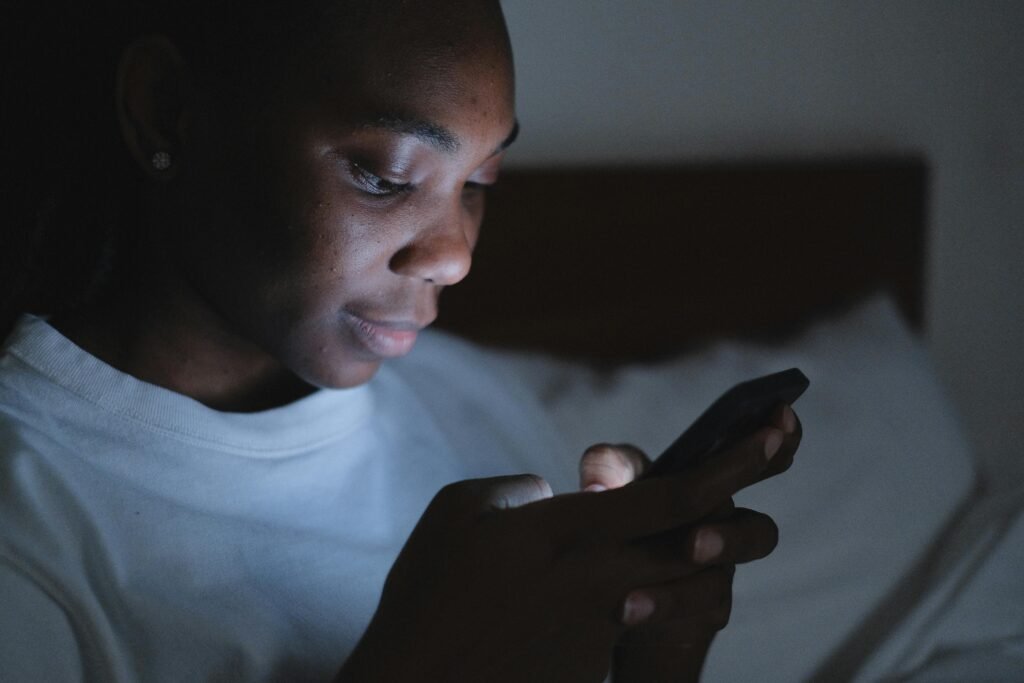Blue Light Filter on Android: Protect Your Eyes at Night
Using your phone at night might feel harmless, but it could actually be messing with your eyes and your sleep. Most of us scroll before bed, binge videos, or reply to late-night messages without realizing what the bright screen is doing to our health. Luckily, there’s a built-in feature that can help: the blue light filter on Android. This simple setting reduces eye strain and makes nighttime phone use more comfortable.
1. What is blue light, and why is it a problem?
Blue light is a part of the visible light spectrum. It’s high-energy and short-wavelength, which means it’s strong—strong enough to reach deep into your eyes. During the day, it’s not a big deal. In fact, blue light from the sun helps keep us awake and alert.
But at night, blue light from screens can confuse your brain into thinking it’s still daytime. This messes with your body’s natural rhythm, delays melatonin production, and makes it harder to fall asleep. Over time, it can also cause eye strain, headaches, and fatigue. That’s why using a blue light filter on Android can be a game changer.
2. The phone feature most people ignore: Night mode or blue light filter on Android
Most Android phones today come with a built-in blue light filter. It goes by different names such as Night Light, Night Mode, or Eye Comfort, depending on your phone brand. This feature adjusts your screen’s color temperature, giving it a softer, warmer tone—usually with a slight yellow or orange hue.
When turned on at night, it reduces the amount of blue light your eyes are exposed to, making screen time feel much gentler.
3. Why you should start using it right now
Turning on this feature takes less than 30 seconds, but the benefits are long-term. Here’s what regular use can do:
• Reduce digital eye strain after long periods of use
• Help you fall asleep faster after screen time
• Prevent headaches from screen brightness
• Keep your eyes more comfortable during night scrolling
If you’re someone who’s always on their phone, especially in the evening, the blue light filter on Android can help you feel less tired and more focused—even if you use your phone for hours.
4. How it works throughout the day
Some phones let you schedule the filter to turn on automatically at sunset and turn off at sunrise. Others allow you to set a custom time. That way, you don’t even have to remember to activate it every day.
You can also usually adjust the strength of the filter—so if the screen looks too yellow at first, you can tone it down to a level that still protects your eyes without bothering you.
5. What if your phone doesn’t have it?
If your phone doesn’t come with this built-in feature, don’t worry. You can still protect your eyes by learning more about how blue light affects your health and sleep. For example, Harvard Health explains how blue light impacts your body. This helps you understand why using a filter is so important.
6. When and why to use a blue light filter on Android
The best time to use a blue light filter is during the evening and nighttime hours—especially the two hours before bed. But if you work late or are on your phone in a dark room during the day, it’s still helpful.
Even just enabling it from 8 p.m. to midnight can help reduce strain, especially if you’re constantly switching between messaging apps, social media, and video platforms.
7. Bonus tip: Reduce screen brightness too
The filter alone does a lot, but pairing it with lower screen brightness takes the pressure off your eyes even more. It’s especially helpful in total darkness, where your eyes are trying to adjust to both a lit screen and a dark room.
Try sliding your brightness down manually or setting adaptive brightness to help your phone adjust automatically.

